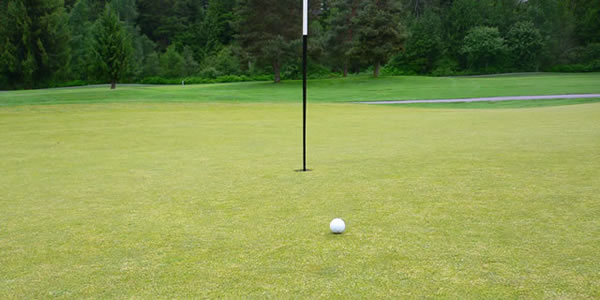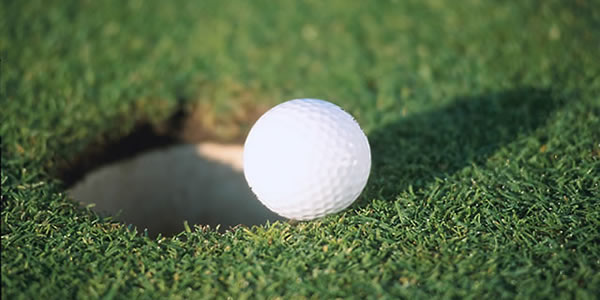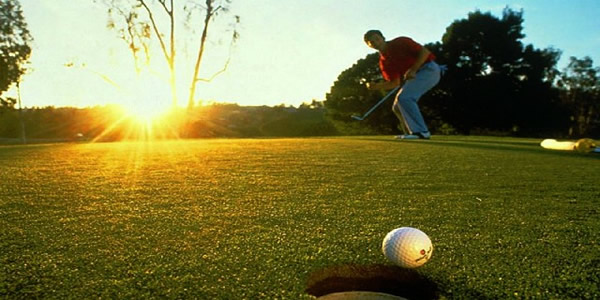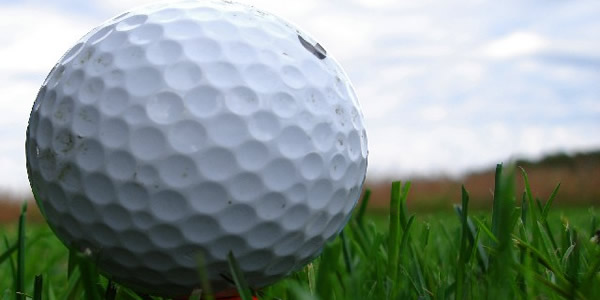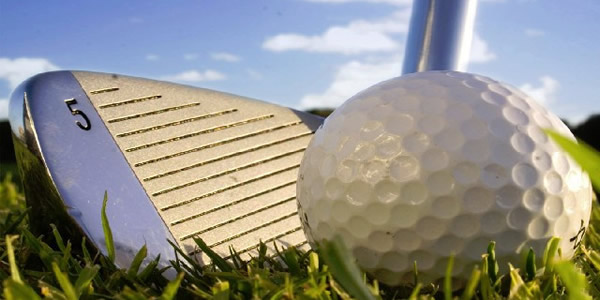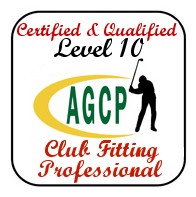Science and Techy Stuff
How it applies to golf clubs
WhatsNew:
Gooder Golf partners up with Mizuno Golf
We're pleased to announce a that we have recently partnered up with Mizuno Golf. Mizuno is a well established company with a long history of producing high-quality product. More great fitting options are now available to us to help golfers get into the right gear that enables them play their absolute best golf. Please see the Mizuno page in our Vendors section for more information.
Gooder Golf partners up with Tour Edge Golf
We're pleased to announce a that the Tour Edge / Exotics Golf family of products will be offered in our fitting lineup. More quality options available to fit you with helps us get the right product into your hands. Please see the Tour Edge / Exotics page in our Vendors section for more information.
"Gooderized" clubs notch a victory on a Professional Tour!
September/2020 was a momentus month for Gooder Golf and one of our "Gooder-ites" (customers). A set of our irons were used to notch a victory on the COVID shortened 2020 Mackenzie Tour (Canadian Tour). It was the first professional win carded for our professional Gooder-ite, and also the first professional win notched for Gooder Custom Golf Clubs. We are thrilled to be able to have helped multiple local golfers win their local club championships, and we have plenty of activity in local amatuer tournaments, but it is especially gratifying to know that our clubs can not only make the cut, but win on a professional tour!
AGCP announces LEVEL 10 certification for Bert Reich
The Association of Golf Clubfitting Professionals recently issued a press release to announce that Bert Reich (Gooder Golf) attained LEVEL 10 status in the field of golf clubfitting and clubmaking. Bert was the second AGCP member in Canada to reach this level.
CurrentNews:
First Heading or Title
September 16, 1926
Lorem Ipsum is simply dummy text of the printing and typesetting industry. Lorem Ipsum has been the industry's standard dummy text ever since the 1500s.
 Lorem Ipsum is simply dummy text of the printing and typesetting industry. Lorem Ipsum has been the
industry's standard dummy text ever since the 1500s.
Lorem Ipsum is simply dummy text of the printing and typesetting industry. Lorem Ipsum has been the
industry's standard dummy text ever since the 1500s.
RecentEvents:
First Heading or Title
September 16, 1926
Lorem Ipsum is simply dummy text of the printing and typesetting industry. Lorem Ipsum has been the industry's standard dummy text ever since the 1500s.
 Lorem Ipsum is simply dummy text of the printing and typesetting industry. Lorem Ipsum has been the
industry's standard dummy text ever since the 1500s.
Lorem Ipsum is simply dummy text of the printing and typesetting industry. Lorem Ipsum has been the
industry's standard dummy text ever since the 1500s.
It all starts with extensive (and valid) data acquisition;
Valid and precise data acquisition for your "performance-based" clubfitting starts with the FlightScope launch monitor. FlightScope uses 3-D doppler radar to measure 24 different data points relating to ball flight data, and club data as a result of your swing.
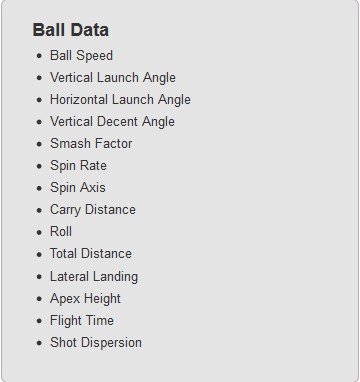
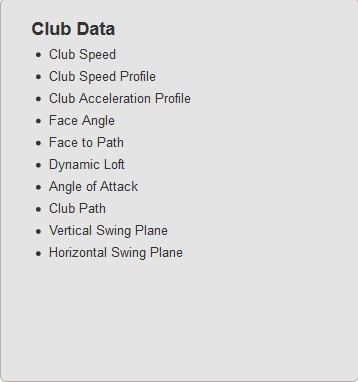
Combine the above data with the multitude of impact labels used during a fitting session, and we end up with a bunch of great information relating to YOUR golf club requirements. Each change is noted and tracked throughout our "journey", and we only change one thing at a time on the road to finding what club combination works the best for you. By the time we're done, we KNOW exactly what combination of length, flex, weight, head design, etc. works best for you - we will know, 'cuz we tested it.
Science & Techy Stuff - how does it apply to golf clubs?
What makes our clubs not only better...but more better.
After going through our performance-based fitting session, we will have gained some valuable data - I use this data as my road map to build the set. We will have determined ideal (1) LENGTH, (2) FLEX, (3) SHAFT WEIGHT, (4) HEAD WEIGHT, (5) club TOTAL WEIGHT / weight distribution, (6) club MOI [stands for Moment Of Inertia - read below for a detailed explanation], and [7] LIE ANGLE for you and the way you swing the club. The data we acquired (better on-center ball contact, consistency, distance, dispersion) will concur with your feedback on what feels the best. Now that I the data we need, it's time to head out to the shop and start creating your work of art.
Frequency Matching
As you know (I hope) - the flex designation on the store-bought clubs (like "R" for regular, or "S" for stiff) are pretty much meaningless terms. I say that because NO STANDARD EXISTS FOR SHAFT FLEX IN THE GOLF INDUSTRY. One brand's "Regular" may be the same as another brand's "Stiff", or another brand's "Ladies". What the hell does "Regular flex" mean anyway???? I have actually measured (with my frequency analyzer) a shaft marked "LADIES" flex, that was actually stiffer than a different brand's STIFF - that just ain't right! I have measured many OEM sets where the flex of the irons is like a fruit salad (you get a little bit of everything). How can you expect to golf consistently if your clubs are not consistent?
Enter FREQUENCY MATCHING. This is a precise and accurate way to actually MEASURE the stiffness (flex) of a golf shaft - the measurement is taken in cycles per minute (CPM). In plain English, when clamped into a special holder - if the shaft vibrates faster (higher CPM) the shaft is stiffer. If it vibrates slower (lower CPM) the shaft is softer. The values are MEASUREABLE - that means no guesswork. Of course, there's a little more to it than that, but I think you get the idea.
Actually, before I do anything with a shaft I "profile" each shaft first. Profiling means that you take a frequency measurement every 5 inches of shaft beam length. Profiling tells us the BEND PROFILE of the shaft - exactly how stiff it is in the butt section, the mid section, and the tip section (these can be matched to your swing characteristics). This is important for knowing how the shaft will react under load. Swing speed is not the only determining factor when deciding how stiff the shaft needs to be for your swing. You can have two golfers with the same clubhead speed, but they could require two completely different shafts (bend profiles). Swing speed is only a piece to the puzzle - one must also consider length of backswing, swing tempo, transition from backswing to downswing, and where in the downswing does the golfer release the wrist-hinge? All of these factors matter for shaft requirements.
To take things one step further - I use a neat shaft sorting system (through shaft profiling) that helps me determine exactly which shaft of the lot should go into which club head in the set (for a set of irons). This neat system means more meticulous details (and time), but that's one more area that we can make stuff "right". I build to frequency for everything - I do not own a tip-trimming chart from any shaft manufacturer. I don't guess on anything, I measure - it adds time to the assembly process, but when I'm done I KNOW exactly what we have - when we're done this portion of things, we can sleep well knowing that every club is at its desired target flex (CPM), and we know the right shaft is going into every head.
If you don't think flex is important - I have proven a number of times how much even half a flex (5 CPM) can influence a golfer's consistency (as measured with impact labels and the launch monitor). I've seen a golfer go from a scattered/inconsistent impact pattern, to a very tight and consistent impact pattern, just by changing a measly half a flex on the shaft (everything else was equal - same clubhead, same weight, same everything - just different flex). It really makes a difference getting the shaft flex/bend profile matched up to how your body loads/unloads the shaft. This whole process of profiling and frequency matching is so critical to the performance and consistency of your clubs, that it's part of every set we build - no exceptions.
Shaft Spine and FLO
Shaft Spines
A shaft is simply a tube - even though they may look it, these tubes are not perfectly round. There are variances in bonding material and thickness along its length. When the shaft is placed under load, it prefers to bend a certain way - that's the simplest way I can explain it. Every shaft wants to bend a certain way, it will have one area that is firmer/stiffer than the others. One of my jobs is to determine which way the shaft wants to bend. We never want to install the shaft on a clubhead in a manner that the bend plane is fighting this hard spot (or spine) of the golf shaft because the shaft will bend inconsistently when loaded and unloaded. On your store bought clubs, they do not check for a spine before assembly - that would be too time consuming. The shafts in store bought clubs are installed so the graphics on the shaft are lined up straight to the clubhead - so they look pretty. The end result is you have a pretty looking club that could be inconsistently bending each time you load and unload the shaft. If you don't think spines are important, talk to a real serious fisherman - those fellas are pretty big on finding the spine of their snazzy fishing rods before they install the eyelets for the line to run though - it's important to them to get the shaft (fishing rod) bending the way it wants to bend. I've never tried this experiment with fishing (I don't fish all that much), but the serious guys say it helps with the sensitivity and feel of their fishing rod. Finding the shaft spine is part 1 of determining the proper orientation of the shaft in relation to the club face. When I find the spine of the golf shaft, I mark it so I have a reference point for phase 2. On to phase 2.......
Flat Line Oscillation (or FLO)
This procedure involves placing the shaft into a fixed holding device, and attaching tip weight and laser pointer to the shaft tip. The shaft is then "twanged" - the laser pointer will make a pattern showing the directions the shaft is oscillating. The goal of this procedure is to get the oscillating line to repeat and hold in a flat line. If the shaft does not FLO, we loosen the clamp and turn the shaft a few degrees, and give 'er another twang. We keep moving and twanging until FLO is achieved. When you find FLO, we know that the shaft will bend consistently each and every time it is loaded and unloaded - 'cuz it's telling us that is the way it wants to bend. Once FLO is determined, the shaft is carefully marked, and I will know where to install the shaft in relation to the clubface. This is the reason that on many custom clubs, the shaft graphics don't line up real pretty to the clubface. What's more important - a stable, consistent, and repeatable shaft...... or pretty graphics? I know which one I prefer in my golf clubs. If my explanation didn't make sense, maybe the pictures below might clear things up.


You can see the difference from the pictures above. The circular pattern on the left is showing random shaft oscillation - if the shaft were installed on the clubhead in this position, it will not bend consistently with each loading/unloading of the golf shaft - could possibly cause you a mis-hit. You see some pretty funky patterns when the alignment is way out of whack. The picture on the right shows oscillation in a flat line - FLO. This shaft is bending consistently the way it wants to bend - it will act predictably and be repeatable each and every time. Make sense?
The FLO'ing process is quite similar to the Pure-ing process you may have heard of. Each of them determines which way the shaft wants to be installed on a golf club. The spine and FLO procedures are kinda like the old radios that had the dial for tuning in stations. The spine procedure gets me to where I can at least hear some music on the old radio maybe with a bit of static, the FLO is the fune-tuning that sets the adjusting knob perfectly on the station to make the music clear. Of the spine and FLO procedures, I always do FLO last, 'cuz it is the trump card. These procedures are also part of every club we assemble.
Swingweight matching and MOI matching
Should you get your new clubs swingweighted or MOI matched? The answer is yes you should (and you will 'cuz it's part of every club I build). Just keep in mind that although each process is somewhat different, the purpose of having either procedure done is to have a form of club-to-club matching in your new set. Swingweight matching is concerned more with the "feel" or "heft" of the clubs as you swing them. MOI matching deals more with the force required to put the club into motion. My humble opinion on club-to-club matching is that MOI matching is the winner hands-down! I say this for a few reasons;
- MOI matching is a scientific form of measurement
- You can truly match the amount of force or energy required to swing each club in the set
- The MOI value on a swingweighted set gradually decreases as each club gets shorter, the 9-iron is usually the lowest MOI club in the set
- Each club in a swingweighted set requires a different amount of energy to swing, they do not all "swing" the same
- When all clubs "swing" the same via MOI matching, it should be easier for you to make your same normal consistent swing with each club
- If you still think you're a swingweight person - "yeah, my number is D-4".... well keep in mind that a D-4 with a 65g graphite shaft is not the same as a D-4 with a 100g lightweight steel shaft, nor is D-4 the same with a 120g steel shaft, nor is D-4 the same with a 140g steel shaft. The D-4 may be common among those 4 clubs, however each one of them will swing VERY differently, each will require a different swing, and each will have different weight distribution along the length of the club ('cuz they all have a different MOI value)....... see where I'm going with this? THERE IS SOMETHING TO THIS MOI MATCHING STUFF!!!!
The feedback I have received from customers, and what I've learned from my own MOI matched personal sets is that greater consistency is one of the benefits of MOI matching, coupled along with a higher percentage of on-center ball contact (if you make your same consistent swing club to club). I truly believe that MOI matching is superior to the archaic "technology" of swingweight matching.
Please read in greater detail below on swingweight matching, and MOI matching.
Swingweighting;
What is swingweight anyway? Swingweight is essentially how heavy the club "FEELS" (or "HEFT") as you are swing it. For example, you can have two assembled clubs (let's say 5-irons) that both have the exact same static physical weight in grams (as measured on a digital weigh scale), but could have substantially different swingweights. If one of the two clubs has more of the weight distributed towards the clubhead, it will have a higher swingweight and will "FEEL" heavier when you are swinging it. The opposite holds true for the other club that has more of the weight distributed towards the grip end of the club, it will "FEEL" lighter as you are swinging it, and thus will have a lower swingweight value. Just my humble opinion, but swingweight is old, archaic, un-scientific, and somewhat un-reliable. The reason I say this is that you could have two clubs that are the same "swingweight", however they can possibly feel totally different when swinging - on the other hand, if you have two clubs that have the same MOI, they will both swing the same.
MOI Matching (Matching clubs by Moment Of Inertia - a replacement for swingweight)
What is MOI Matching?
MOI matching is quickly becoming the popular (and many users say superior) replacement for swingweighting. Its popularity is growing at an astounding rate. Unlike swingweighting, MOI matching is based on science which identifies the actual force required by the golfer to swing the club. Once the "ideal" MOI is determined, all clubs are matched to have the same force requirement to swing.
The MOI of any object is a measurement of its resistance to being placed in motion around a defined axis of rotation. Related to golf clubs, if each club in a set requires a different amount of force to swing the club (set the club in motion to rotate around our body), it stands to reason that the golfer cannot be as consistent swinging each different club in the set. In most simple form, this is what sets MOI matching apart from matching clubs to the same swingweight. MOI matching makes the FORCE required to swing each club exactly the same. Swingweight matching makes the "feel" or "heft" of each club the same. Although they sound similar, they are NOT the same thing. A set of golf clubs that has been MOI matched, will not have the same swingweight values for every club in the set (each club's swingweight value will be different). Swingweight matching does not make each club the same in terms of the amount of force required by the golfer to swing each club and hit the shot - MOI matching does. However, because golfers can be quite different in their strength, tempo and swing mechanics, the right MOI must be identified and fit for each golfer to allow the concept to properly work.
How is the right MOI determined for each golfer?
The preferred method (for in-person fittings only) is to use a test club in the fitting process. By manipulating the head weight or shaft weight and weight distribution, it can be possible to find a headweight to “rest of the club” ratio that will result in a higher percentage of on center hits. Once done, the test club is measured for its MOI, and the entire set can be assembled to match the same desired MOI.
Swingweighting or MOI matching is another way to fine tune your clubs, where either the "heft" or "feel" can be matched from club to club, or the force required to swing each club is matched. Whether it be swingweight match, or MOI match - some form of weight balance to swing characteristics MUST be done.
Here's another tid-bit of history for you - every set of clubs I have built in the last four years have been MOI matched, I am a HUGE believer in MOI matching - it's measurable science, it only makes sense. Every customer is given the option at time of purchase that after a reasonable "adjustment" time for the new clubs, if he/she feels this MOI stuff is for the birds, I will take them apart and swingweight match them to whatever value they want. I have yet to have to take a set apart for re-weighting. MOI matching (in my humble opinion) is superior.
Loft & Lie Angles
Unfortunately, loft and lie are far too often overlooked (pretty much forgotten) when it comes to golf clubs. Loft and lie angles should be checked/adjusted every year - they can change after numerous "encounters" with Mother Earth. The LOFT of a golf club has much to do with how high and how far the ball travels. The more loft you have, the ball will go higher and not as far. The less loft you have, the ball will go lower and farther (when struck properly). A 5-iron travels lower and farther than a pitching wedge. Ideally, in a set of golf clubs, you want enough difference in the loft (and proper length) of each golf club to produce a 10-15 yard differential in how far each club hits the ball with a good swing. See the pics below to see what loft is.
 An example of a higher-lofted club (PW), the ball will go high and not very far.
An example of a higher-lofted club (PW), the ball will go high and not very far.
 An example of a lower-lofted club (5-iron), the ball will go lower than a wedge, and farther.
An example of a lower-lofted club (5-iron), the ball will go lower than a wedge, and farther.
Lofts can change over time from repeated impacts with the turf. Occasionally, even when clubheads are new, they can be off by a degree or two.
The LIE of a golf club is very important to how the club will perform - and that ain't no lie - yup, it's true (pardon the pun). The proper lie angle for each golfer is NOT the same (the lie angle does change from club to club). Proper lie angle depends on many factors - your height, your stature, how upright you stand when you're addressing the ball, how close your arms are to your body during your swing, or how flat or upright your swing plane is. If the lie angle of a golf club is too upright for you and your swing - the ball will have a tendency to either pull. If the lie angle of a golf club is too flat for you and your swing - the ball will tend to push. If the lie angle is correct, assuming you made a good swing, the ball should go straight. See pic below to better understand lie angle.

Getting your loft & lie angles correct is just another piece to the puzzle when it comes to making the best set of clubs for you. It's another way we can fine-tune the clubs to what your body does with them. I don't build clubs to "standard lie", 'cuz I don't know what "standard lie" is or means. Nobody who plays this game is "standard", and we sure as hell don't all swing clubs the same either - thus, we can't possibly all need the same specs in our golf clubs.

